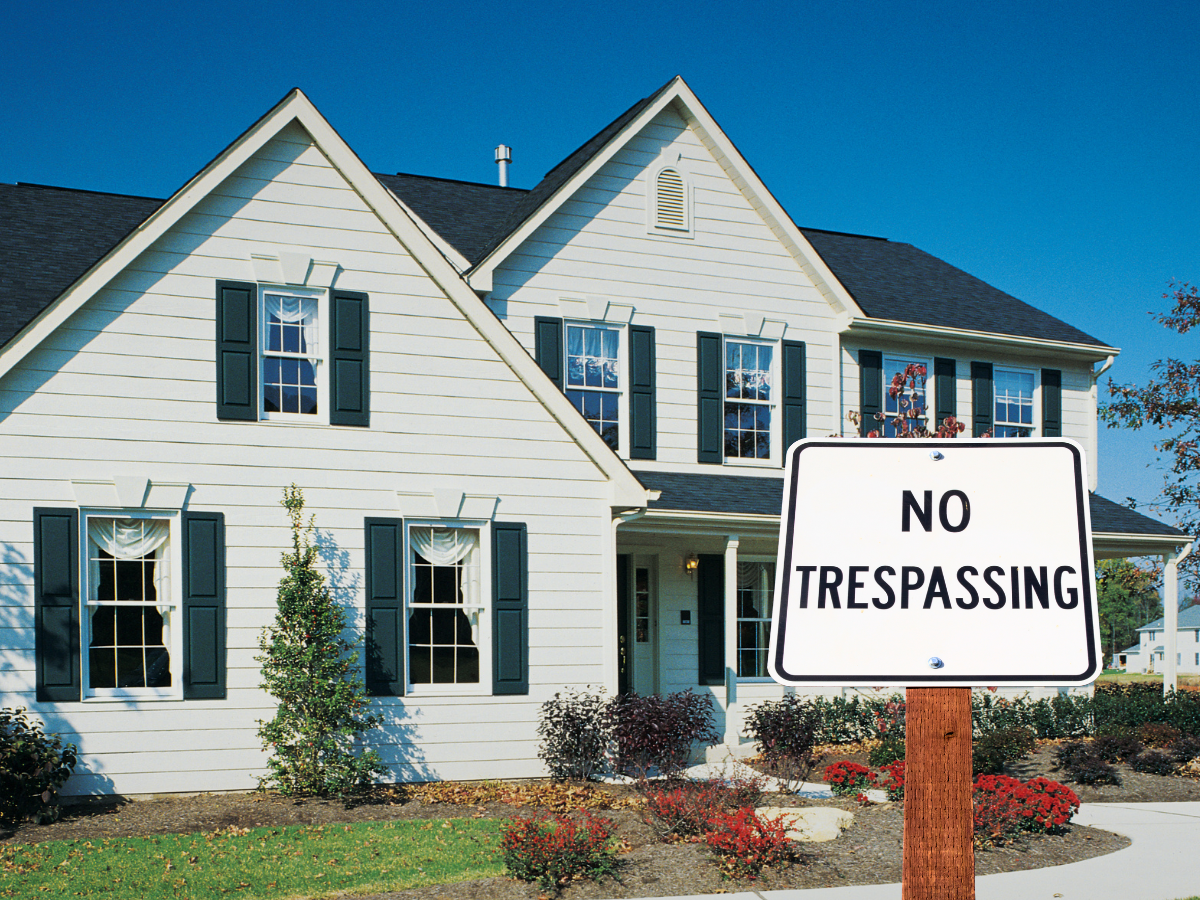Squatters’ Rights in the Inland Empire: What Landlords Need to Know
If you own property in Riverside or San Bernardino County, you may have wondered what would happen if someone moved into your place without permission or stayed longer than allowed. This situation is more common than some realize, and many are surprised to learn that squatters even have legal rights.
California has rules that explain squatters' rights, which are not as simple as one side or the other automatically winning. These laws exist to ensure that the rights of property owners are respected while also extending basic protections for people who move into empty houses or stay past their lease.
When you understand how these laws work, you can protect yourself and your investment. In this guide, we’ll go over squatters' rights in the Inland Empire, explaining where these rules come from, how they differ from trespassing, and what steps you can take to prevent and address squatting.
The Legal Definition of Squatting
Squatting happens when someone takes over a property without permission and treats it like their home. Squatters often move in furniture, change locks, or have mail delivered to the address. This makes them harder to remove, since the law requires landlords to use the formal eviction process.
In the Inland Empire, vacant single-family homes and foreclosed properties are the most common settings for squatting, along with empty commercial buildings. Even though squatters are not legally authorized to be on the property, law enforcement usually cannot remove them until the owner takes the case to court and wins. This is often when landlords first ask, “What are squatters' rights?” since the answer determines the next steps.
The History of Squatting Laws in the Inland Empire
The idea of squatters' rights in the Inland Empire dates back to the 19th century, when lawmakers wanted land to be used rather than abandoned. If property sat empty for years, and someone else moved in, lived there openly, and paid property taxes, the law created a pathway for that person to claim ownership eventually. This is the origin of adverse possession.
Modern requirements are much stricter. To even try for ownership, squatters must prove they lived on the property continuously for at least five years and that they paid all property taxes during that time. Because these requirements are so strict, successful claims are rare. Even so, it’s crucial for landlords to actively maintain and monitor their properties, since staying involved is the best protection against any risk of unintended loss of ownership.
The Difference Between Trespassing and Squatting
Trespassing and squatting are often confused, but they are not the same thing. Trespassing usually means someone enters a property without permission for a short time, such as cutting across a lot or briefly stepping onto private land. Squatting involves staying put and treating the property as a residence.
Trespassers can often be removed quickly by law enforcement, and even by property owners if the individual poses a threat. Squatters, however, usually require a formal eviction process because their presence looks more like residency. Many landlords only start asking, “What are squatters' rights?” once they find out the police can’t help them with someone who’s moved in unexpectedly.
There’s also a myth that living in a property for 30 days makes someone the legal owner in California. While that isn’t true, it can give the squatter tenant-like protections, meaning you may need to go through a formal eviction instead of simply asking them to leave. That’s why acting quickly is so important.
The Process of Adverse Possession in the Inland Empire
One of the most misunderstood parts of squatters' rights in the Inland Empire is adverse possession. Although talked about like it’s a common occurrence, the truth is that successful cases are very rare. Still, landlords need to be able to answer the question “how do squatters' rights work?” in order to protect themselves and their property.
Requirements for Adverse Possession
To claim ownership under adverse possession in the Inland Empire, squatters must meet every single one of the following requirements for five years in a row:
- Open and obvious use: The squatter has to use the property as if they own it. This could mean putting up a fence, making improvements, or otherwise showing control so the real owner would reasonably notice.
- Without permission: The squatter’s time on the property must be against the owner’s wishes. If the owner allowed them to stay, it doesn’t qualify.
- Claiming ownership: The person has to either believe they own the property, even without paperwork, or have some kind of flawed or incomplete document that suggests ownership.
- Continuous and uninterrupted living: The person has to stay continuously on the property for at least five straight years. If they leave or are forced out, the clock resets.
- Payment of property taxes: They must pay all property taxes for those same five years, on time and in full.
Paying property taxes is often the toughest requirement and the main reason most adverse possession claims fail. Because of how hard it is to meet all of these conditions, winning a case is rare. For Inland Empire landlords, this means that squatters’ rights mostly involve eviction protections. In other words, the chance of actually losing property ownership is very slim.
Even if a squatter believes they meet all the requirements, ownership doesn’t automatically change hands. They must file a lawsuit, called a quiet title action, asking a judge to officially decide who owns the property. The burden of proof is on them, not the property owner. If all of the above conditions are met, the court may award the squatter ownership of the residence by granting them a title. However, for landlords who stay on top of their property taxes and conduct regular inspections, these cases are usually easy to defeat.
The Legal Protections for Squatters
While the idea of squatters’ rights may be frustrating, these protections are ultimately in place to prevent unlawful evictions. So, what are squatters' rights?
Once someone has established residency, even if they moved in without permission, they cannot simply be forced out on the spot. The law requires that they be given notice and a chance to respond before an eviction can move forward.
While squatters are normally viewed as trespassers, in rare cases, they may be treated like tenants. For example, if they paid rent to a scammer who pretended to own the property, the law may give them tenant rights until the case is sorted out. That doesn’t mean they get to keep the home, but it does mean the eviction has to go through the proper steps.
These rules are intended to protect people from being thrown out unfairly or ending up homeless without notice. They may slow down the eviction process, but they don’t take away a landlord’s rights. They simply make sure everything is handled legally.
Legal Recourse for Property Owners Subjected to Squatting
While squatters' rights exist, landlords also have strong protections. So, while you’re searching for “how do squatters' rights work?” make sure you’re also taking the time to understand how the law covers you. Under California law, landlords have the power to keep unauthorized people out, take back control through eviction, and even seek damages if the property has been damaged.
The one thing landlords cannot do is take matters into their own hands. Cutting off utilities, changing locks, or removing doors might seem like quick fixes, but these actions are considered unlawful “self-help evictions”. Instead, the law requires you to go through the courts and follow these specific steps for an eviction:
- Serve a Notice to Quit: Provide the squatter with a three-day written notice to leave your property.
- File an unlawful detainer lawsuit: If the squatter hasn’t left after three days, file an unlawful detainer lawsuit in Superior Court to begin the legal eviction process.
- Serve the papers: After the lawsuit is filed, the squatter must be formally served with the court papers so they are aware of the case.
- Go to court: At the court hearing, the squatter may choose to fight the case or, if they fail to respond, you may win by default.
- Get a writ of possession: If you win, the judge will issue a writ of possession, which is the official order returning control of the property to you, the owner.
- Sheriff enforces the eviction: Only the Sheriff (not the landlord) can carry out the physical removal of the squatter and return possession of the property.
If you’re ever in doubt about squatters’ rights or your own, consulting with an experienced attorney can help you avoid mistakes and keep the process moving without delay.

How to Prevent Squatting in the Inland Empire
Equally as important as understanding squatters' rights in the Inland Empire is knowing how to prevent them in the first place. The easiest way to avoid the stress of dealing with squatters is to make sure your property never looks empty or abandoned. Squatters are far more likely to move into places that seem neglected, while well-kept properties show that someone is paying attention. Prevention efforts can also give you the upper hand if you ever need to prove in court that you were actively managing your property.
Here are some of the most effective ways you can prevent squatters in the Inland Empire:
- Check on the property often: Visit regularly, especially if it’s vacant, and keep notes and photos from each visit. If you don’t live close by, ask a neighbor or friend to keep an eye out for you.
- Make the property look lived-in: Squatters won’t target a property they believe to be occupied, so do what it takes to create the illusion that it is. Maintain the yard, set lights on timers, and make sure the property looks well-cared for. You can also add signs that read “Beware of Dog” or “Property Monitored by Security Cameras,” even if you don’t own a dog or have a security system set up.
- Secure the property: Use reliable locks on the doors and windows and consider installing visible alarms or cameras. The harder it is to get in, the better chances you have of keeping a potential squatter out.
- Post signs: Posting a “No Trespassing” sign in your yard puts your intentions on clear display.
- Work with neighbors: Ask nearby residents to let you know if they see any suspicious activity around your property. Some neighborhoods even have watch programs.
Not only do these steps discourage squatters, but they also help your case if you ever need to show the court that you stayed actively involved as the rightful owner.
Final Thoughts: Squatters’ Rights in the Inland Empire
Understanding squatters' rights in the Inland Empire can feel confusing, but as a landlord, it’s essential to know what you’re up against. The important thing to remember is that squatters don’t become owners just by moving in. Adverse possession may be possible, but because it requires five years of continuous living and payment of property taxes, it’s extremely rare.
In reality, squatters' rights are mainly about ensuring that evictions happen legally through the courts. Prevention is your best defense against these scenarios. By keeping your property secure, your taxes paid, and your reactions swift, you can deter squatters from your property.
If you’d rather not shoulder the stress alone, consider hiring a property management company like Evernest instead. As your boots-on-the-ground team in the Inland Empire, we’ll handle inspections, keep your properties secure, and step in the moment there’s a problem. Contact our local property management team whenever you’re ready to hand off the headaches and focus on growing your investment.

